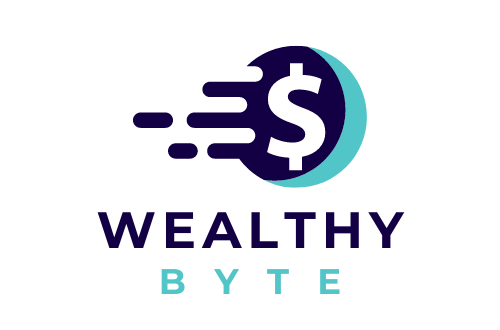Data is the most vital commodity in your lives today, and it’s only getting more precious with time! Whatever people use, do, or see, is influenced by technologies in some way.
Those technologies are getting more and more complex each year. So there is an ever-increasing need for storing, analyzing, and processing this data.
Being an open and unified data analytics platform, Databricks makes money by offering hourly access to its advanced resources. Data analysts, scientists, engineers, and large business enterprises are Databricks’ major customers. Databricks offers a pay-as-you-go model for its premium subscribers.
Companies are collecting data from various sources. They have a lot to process and analyze for commercial, political, and other purposes. Databricks is the firm that offers solutions to store an enormous amount of data.
Continue reading to find out how this company literally mints money with their platform!

What is Databricks?
Many organizations across the globe now make data-driven decisions. Big Data has become a source of information and data analysis has become the key priority of companies. Hence, the flow of data is increasing every day.
Business organizations seek a reliable, faster, and scalable platform so that data scientists, engineers, and analysts can work flawlessly.
Databricks help Big Data professionals by offering cloud-based data engineering tools to process huge volumes of data. Many companies are using Databricks to enhance their capability of utilizing the gathered data, improve machine learning, and ETL processes.
Apache Spark, which offers a unified analytics engine to process big data, had established Databricks in 2013. This company was introduced as a data warehouse where users can store structured and unstructured data on the cloud.
Today, Databricks is serving as a one-stop destination for users’ demands related to artificial intelligence (AI), Data, and analytics functions. Its Lakehouse platform has got the best features from data warehouses and data lakes.
The Lakehouse platform functions seamlessly because Delta Lake and MLflow ensure the effective functioning of this platform. Databricks is offering Unified Data services through various clouds such as AWS, Google Cloud, Alibaba Cloud, and Microsoft Azure.
Since the data market is growing pretty rapidly, Databricks is emerging as a major player in this new industry. The AI technology hugely depends on data and Databricks can provide the required infrastructure for maximum optimization.
SUGGESTED: How Zynga makes money
Databricks History
Databricks was developed at the University of California, Berkeley. It was an open-source distributed computing system based on the Scala programming language.
Ali Ghodsi, Arsalan Tavakoli-Shiraji, Andy Konwinski, Ion Stoica, Patric Wendell, Matei Zaharia, and Reynold Xin are the early contributors to this platform.
The Databricks Company was introduced as a first-party service on Microsoft Azure. It is developing Delta Lake, which is also an open-source project. This project has been developed to make data lakes more reliable for machine learning and other data-related demands.
Databricks continued to expand rapidly and it also acquired Redash in 2020. Redash is a sophisticated open-source program created to support data analysts and scientists in assessing, visualizing, and creating interactive dashboards for Big Data.
Databricks has collaborated with Google and acquired their 8080 Labs to meet its future goals. This company is frequently raising funds to support its expansion and the development of its future products.
That’s primarily why a lot of my readers are interested to know how they really make money!
How Does Databricks Make Money?
Databricks became a Unicorn Company in 2019. Its $38 billion valuations surprised a lot of the industry insiders. So, how does this data management and analytics company earn profit? Let’s find out.
Databricks is offering a unified platform to collect, prepare, and process data. It has introduced an open-source big data platform, which is quite flexible when it comes to deploying machine learning and artificial intelligence applications for various enterprise demands.
They are empowering machine learning and data science teams to process and analyze huge volumes of data in a super-efficient manner!
Databricks has collaborated with major cloud providers, such as Azure, AWS, and GCP to integrate with its system. It means they don’t have any servers of their own!
Databricks’ clients pay fees to ensure their machines are always running and for additional features, such as Notebooks and jobs offered by Databricks.
Clients pay hourly to use Databricks’ platform. This pay-as-you-go model has played a vital role in making Databricks a major player in the Data Management Industry. Users also subscribe to Databricks’ premium services to use its resources whenever required.
Clients pay a different fee to access resources through different cloud platforms. However, the best part is that they are billed only when they use the resources. There is no payment upfront, and the charges are assessed based on resources used, regardless of the services they choose.
RELATED: Wallapop Business Model
How did Databricks Become a Unicorn?
Databricks was a startup in 2013. Spark Technology had established this platform to create automated cluster management and IPython-style notebooks. But the company faced troubles after the launch because people believed that they didn’t have enough memory to store the client’s data.
So the founders finally decided to participate in a contest to process one petabyte of data. They created a new world record by processing such large data in the lowest time. The word spread and Databricks instantly became popular across the community.
Databricks was valued at $500 million in 2017 despite having an annual revenue of just $1 million! Founders decided to hire more intelligent people and develop software demanded by large businesses. It helped them quickly boost the revenue and become a major player in the data management industry.
Databricks didn’t look back since it started offering enterprise tools in 2017. Its revenue grew to $100 million in 2018 and then $200 million in 2019. It introduced the Lakehouse feature and several other features that drew data analysts, scientists, and engineers from all over the world.
Databricks was valued at a whopping $38 billion firm by the third quarter of 2021. The annual recurring revenue of this firm was $425 million in 2020 and it is expected to reach $1 billion by 2022!
Databricks Offerings
Databricks is providing the following products:
Lakehouse
This company is selling a cloud data platform, which is commonly known as “Data Lakehouse”. It is a combination of two terms: Data Warehouse and Data Lake. It is based on Apache Spark’s open-source framework through which users can run analytical queries against semi-structured data.
Data warehouse and Data Lake are two different things. Databricks reduces differences between the two through its Lakehouse platform. Thus, it combines artificial intelligence and business intelligence in a single solution.
Delta Engine
The Delta Engine is a new query engine introduced by Databricks in June 2020. This engine is built to improve query performance for Delta Lake. Since MLflow and Apache Spark are this company’s own projects, the Delta Engine shows great compatibility with them.
The Delta Engine has three major components, a sophisticated query optimizer, a caching layer, and a vectorized execution engine. These components play an important role in boosting the performance of Delta Lake for data frame workloads and SQL.
Databricks SQL
Databricks had launched the DB SQL to support business intelligence analytics reporting for data lakes. It helps clients run a multi-cloud lakehouse architecture, which offers 12-times better performance than old-school cloud data warehouses.
It relies upon open-source standards to avert data lock-in. Thus, the DB SQL offers quality, reliability, and performance users do not get at data lakes. It is packed with thousands of optimizations to offer the best outcome for all types of queries and real-world applications.
Databricks is also entertaining clients for other demands, such as machine learning, streaming analytics, data storage and processing, and business intelligence. Delta Lake, Koalas, and MLflow are some other products created by this company for data science, data engineering, and machine learning.
Databricks is also co-organizing online courses to teach newbies and help them understand all significant operations in Data Management and Analytics.
They train them on how to utilize a huge volume of data for the specific needs of clients. That’s another reason why this company is fostering in the industry.
SUGGESTED: The Oracle Business Model
What’s the Databricks’ USP?
Clients prefer Databricks’ services because of the following benefits:
- This company is offering a Unified Data Analytics Platform for data scientists, engineers, analysts, and business analysts. They do not need to subscribe to different services for their demands. Therefore, most professionals in Data Management and Analytics industry are relying on Databricks for their needs.
- This platform is offering great flexibility across distinct ecosystems, such as Azure, AWS, GCP.
- They guarantee data scalability and reliability via Delta Lake!
- This platform is supporting frameworks such as TensorFlow, Sci-kit-learn, Keras, Libraries such as Pandas, Matplotlib, NumPy, IDEs such as RStudio, JupyterLab, and Scripting languages such as Python, e.g.R, SQL, and Scala.
- Users can do Model Lifecycle Management and use AutoML through Databricks’ MLFlow.
Databricks provides users with built-in visualizations. It enables Hypertparameter tuning and it has also got bitbucket and Github integration. Users admire solutions offered by Databricks because it is 10-times faster than other ETL (extraction, transformation, and loading) service providers.
All the above-listed benefits make Databricks a major player and a one-stop destination for enterprises of all sizes.
Who is the target market for Databricks?
The following professionals use solutions offered by Databricks for their businesses and other organizations.
- Business analysts and data analysts
Data analysts use business intelligence integration and DB SQL to visualize data. They use this platform to forecast major challenges and growth aspects of the business.
- Data Scientist
These professionals work to source data, which is an important skill and often neglected due to advanced ML algorithms. Data scientists use Databricks’ services to create predictive models and deploy that model to generate the desired outcomes. Data scientists are also responsible to maintain the model throughout its lifecycle.
- Data Engineer
Data Engineers are professionals skilled enough to build ETLs and ensure the data flows constantly. It is their job to source, clean, process, and check the quality of data before it goes into operational tables. Data engineers are also skilled to deploy models and Databricks is their first choice to carry out all those operations.
Databricks is still facing challenges due to the expensive costs of its services. Small and medium-sized businesses are still looking for alternatives for their data sourcing, processing, and analyzing needs. This company can become the biggest player in the industry if it manages to entertain business organizations of all sizes.
Final Thoughts
Databricks is currently developing two fast-growing big data domains. It is also investing in a multi-faceted API to process data from both domains. The company aims to offer the most innovative solutions for processing and analyzing Big Data.
This company has grown quite rapidly since 2015 because they actually put efforts into solving the client’s needs. Its annual revenue is expected to reach $1 billion by the end of this year. Experts also believe that Databricks can become the most profitable firm of its kind by 2027!















